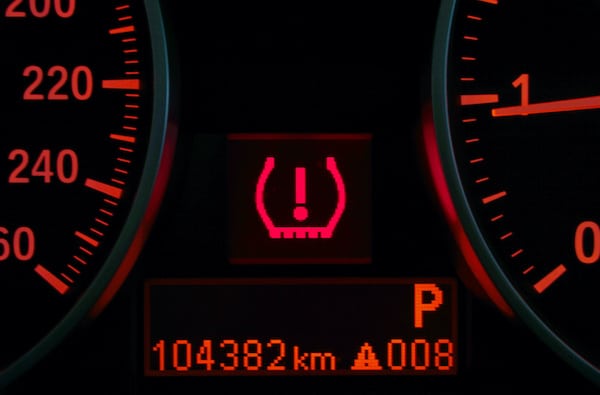If you’ve been driving for a while, chances are you’ve seen the tire pressure warning light illuminate on your dashboard at some point. It’s a common occurrence and can happen for a variety of reasons. In this article, we’ll explore why your tire pressure warning light might be on, how to check your tire pressure, and what to do if your tire pressure is low.

- What is the Tire Pressure Warning Light? Your tire pressure warning light is an indicator on your dashboard that illuminates when one or more of your tires are underinflated. This warning light can vary in appearance, depending on the make and model of your vehicle, but it’s typically yellow or red and looks like an exclamation point surrounded by parentheses.
- Why Does the Tire Pressure Warning Light Come On? There are several reasons why your tire pressure warning light might come on. Some of the most common reasons include:
- Changes in temperature: Extreme temperatures can cause the air in your tires to expand or contract, leading to changes in tire pressure.
- Punctured or damaged tire: A punctured or damaged tire can cause air to leak out, leading to low tire pressure.
- Worn-out tire: A worn-out tire may have thin treads or cracks in the sidewall, which can cause air to leak out.
- Faulty tire pressure sensors: The sensors that monitor your tire pressure can fail, causing the warning light to come on even if your tire pressure is normal.
- How to Check Your Tire Pressure To check your tire pressure, you’ll need a tire pressure gauge. Here’s how to do it:
- Remove the valve cap from one of your tires.
- Press the tire pressure gauge onto the valve stem and hold it firmly in place until the gauge stops moving.
- Read the pressure gauge and compare it to the recommended tire pressure listed in your vehicle’s owner’s manual or on the driver’s side door jamb.
- Repeat this process for each of your tires.
- What to Do if Your Tire Pressure is Low If your tire pressure is low, you’ll need to add air to your tires. Here’s how to do it:
- Locate a gas station with an air pump.
- Remove the valve cap from the tire that needs air.
- Press the nozzle of the air pump onto the valve stem and hold it firmly in place.
- Add air to the tire in short bursts, checking the tire pressure with a gauge between each burst.
- Repeat this process until the tire pressure reaches the recommended level.
- How to Use an OBD Scanner to Understand Why Is the Tire Pressure Warning Light On If your tire pressure warning light is still on even after you’ve checked and adjusted your tire pressure, you may need to use an OBD (On-Board Diagnostics) scanner to identify the problem. An OBD scanner can read the diagnostic trouble codes (DTCs) stored in your vehicle’s computer system and help you identify the issue. Here’s how to use an OBD scanner:
- Locate the OBD-II port in your vehicle. This port is usually located under the dashboard on the driver’s side of the vehicle.
- Connect the OBD scanner to the port.
- Turn on the ignition and follow the instructions on the scanner’s screen.
- Write down the DTCs that the scanner displays and use them to diagnose the problem.
In conclusion, understanding why your tire pressure warning light is on is essential for maintaining your vehicle’s safety and performance. Whether it’s due to changes in temperature, a punctured or damaged tire, a worn-out tire, or faulty sensors, it’s important to check your tire pressure regularly and take action if it’s low. By using a tire pressure gauge and adding air as needed, you can avoid potential accidents and prolong the life of your tires. If the warning light persists, using an OBD scanner can help identify any underlying issues that may need attention. By taking these simple steps, you can keep your vehicle running smoothly and safely on the road.

